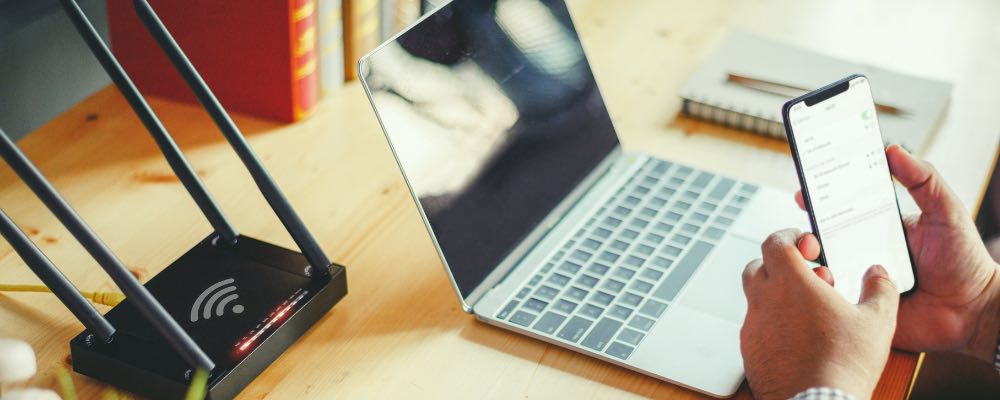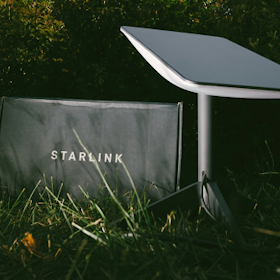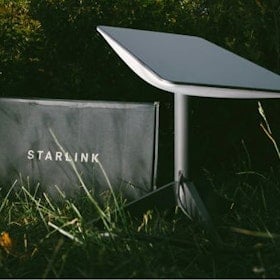
Having internet connection troubles? It can be super frustrating if you have a Wi-Fi connection but no internet access. Luckily, it’s often a pretty quick and easy fix to get your internet connection back up and running.
Internet connection troubleshooting steps include visiting your ISP’s app or website to check for network outages; checking your modem, router, or connected devices for hardware issues; and making sure your software is running properly. Let’s jump into more details on how to troubleshoot your internet connection.
Check for an internet outage
The first option to solve your network connection issues is checking to see if your internet service provider (ISP) is currently experiencing any network issues or outages. It’s possible that you’re not alone in having a network performance problem. Instead, everyone in your region with the same provider as you is dealing with an outage. Network hardware from your internet service provider is possibly malfunctioning, so there’s not much you can do to fix this issue.
To check if your ISP is currently experiencing an outage, perform a quick online search or use your provider’s website, mobile app, and social media accounts. Websites like downdetector.ca are also useful.
Check your device's hardware
If the problem doesn’t lie with your ISP, check for connection issues with your device. First, try turning your device off and back on again. More times than not, when I’ve run into an issue like this, restarting my device gets me connected to my network and back on the internet.
If this doesn’t work, try opening different applications and websites, preferably across multiple browsers and devices. This can help pinpoint if your problem stems from just one mobile device, one browser, or one application that’s dealing with slow internet speed or connectivity issues.
Phone struggling to keep up?
Even the best phones eventually slow down. Whether you’re looking for a budget-friendly midrange phone or an ultra-premium device, WhistleOut’s phone finder will help you find a new device that you’ll fall in love with.
Check your device's software
Next, troubleshoot your internet connection by opening up your Task Manager (Windows PC), Activity Monitor (Mac), or multitasking view (mobile device). These views will let us see what apps are open and, on computers, how much internet they’re using. If there’s an application using too much internet bandwidth at once, it could be what’s slowing you down.
Task Manager (Windows PC)
- Press Ctrl + Shift + Esc on your keyboard.
- Click Network to sort by network usage.
- Note if there’s a program using a lot of internet bandwidth.
If the program using a lot of internet bandwidth is doing a large download, you may just need to wait for the download to finish for your internet connection to get back up to the speeds you’re used to for all of your devices.
The program that’s consuming a lot of bandwidth could need to be closed and reopened if you’re not in the middle of a download. Simply closing it as you usually do could be all that you need.
Activity Monitor (Mac)
- Press Command + Spacebar on your keyboard.
- Select the Network tab. This view will be sorted by network usage automatically.
- Check if there’s an open application using a lot of internet bandwidth.
This application could be in the midst of a download that you’ll need to wait out or may require a good old-fashioned close and reopen. Once you’ve finished your download and/or have closed and reopened the application, recheck Activity Monitor.
Multitasking view - iPhones
- Swipe up from the bottom of your screen and hold until your open apps appear (if your Apple device has a Home button, double-tap this instead).
- Close each app by swiping up on them.
- Reopen the app(s) that you were trying to connect to the internet with.
If you’re able to connect to the internet, great! If not, continue with the steps below.
Multitasking view - Androids
- Swipe up from the bottom of your screen until your open apps appear (if your Android device has physical or digital buttons, tap the multitasking button, usually indicated with three vertical lines).
- Swipe up to close your apps. Tip: Some Android devices have a button that will read “Close All Apps” or something similar. This works as well.
- Check the app(s) that you were trying to connect to the internet with again.
This may fix your issue just by giving the app and your ISP another chance to communicate over your Wi-Fi network, and if so, awesome. If you’re still not able to connect, keep reading.
Check for viruses
Using antivirus software to look over your computer can reveal issues not only with your internet speed but with your all-around performance. Some operating systems include antivirus utilities already installed, like Windows 10’s Windows Defender. These programs will scan as much of your computer as you allow and give you a report that shows all of the potential bugs you may need to handle.
Check your modem and router
If all of the above steps haven’t fixed your connectivity issues, your wireless modem and/or wireless router could require a reboot or a replacement. Most ISPs provide you with hardware that’s both a modem and router in one. If you have an extra piece of hardware, you’ll repeat the process for both units.
- Unplug your hardware from its power supply.
- Wait 30 seconds and then plug the power supply back in.
- Try connecting to your network after the device has booted back up.
If the reboot takes more than five minutes, your internet hardware likely needs service or a replacement. Performing a factory reset on your modem or router can potentially solve this. The methods for factory resetting these pieces of equipment are different from model to model but usually involve holding down a small reset button until the lights on your modem or router change colour or turn off and then back on. Doing this resets your IP address and gives you a chance to connect with fresh information on all sides.
If none of these steps have solved your issue, it’s time to call your ISP or look into a new internet plan. We’ve included some of the most popular plans in the country below. If none of these seem to be the perfect plan, you can take a look at our best cheap internet plans, best internet for gamers, or use the WhistleOut search engine to find the perfect plan for you.
Improve your internet connection
Having reliably fast internet access is necessary with many people working, streaming, and gaming from home. Let’s take a look at some additional tips to increase your connection’s reliability.
Lower your device proximity
If you’re using a Wi-Fi connection to access the internet, you’ll be better off using your device closer to the source of your internet (your modem and router equipment), as the signal doesn’t have to travel as far. If you live in a large home or want to work in different areas around the house, it could be worth looking into a Wi-Fi booster or Wi-Fi 6.
Wi-Fi boosters, sometimes called Wi-Fi extenders, allow your Wi-Fi signal to extend its effective range. Our guide on Wi-Fi boosters and extenders will give you everything you need to know on the subject.
The newest evolution of wireless internet connectivity is Wi-Fi 6. It isn’t available everywhere just yet, but ISPs are starting to support it more and more while third-party brands are starting to add Wi-Fi 6 modems and routers to their offerings. Wi-Fi 6 offers faster theoretical speeds, increased coverage range, and other benefits.Use a wired connection
Another option for improving your internet speed and reliability is using an Ethernet cable for a wired connection instead of a Wi-Fi connection. This is one of the most reliable and fastest ways to connect to the internet because there’s less opportunity for interference and other conditions impacting the speed and clarity of your information transfer because you’re connecting directly to your ISP. Think of it like using the carpool or express lane when the highway is backed up with regular traffic.
Make the switch to a new internet plan
Sometimes new really is better. If you’re using an older or slower internet plan, you might need to upgrade so that you and your household can game, stream, and stay connected as much as you want. Our guide on the best Canadian ISPs is a great place to start finding a new plan that you can fall in love with.
Related Articles
Find Better Internet and Phone Plans
Hundreds of internet plans unpacked. All the facts. No surprises.
Internet Providers by Provinces and Territories
- Internet in Alberta
- Internet in British Columbia
- Internet in Manitoba
- Internet in New Brunswick
- Internet in Newfoundland and Labrador
- Internet in Northwest Territories
- Internet in Nova Scotia
- Internet in Nunavut
- Internet in Ontario
- Internet in Prince Edward Island
- Internet in Quebec
- Internet in Saskatchewan
- Internet in Yukon Territory





























